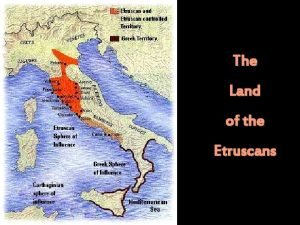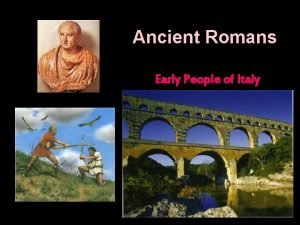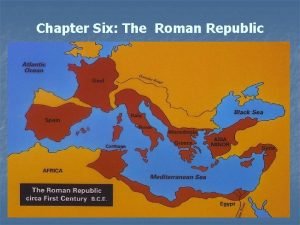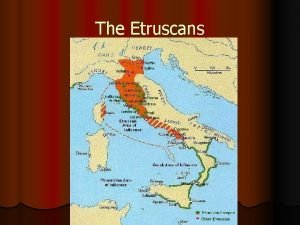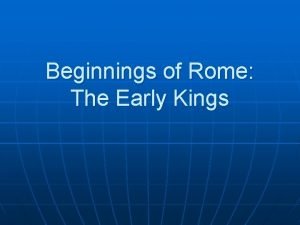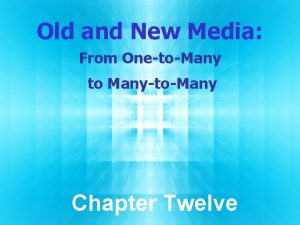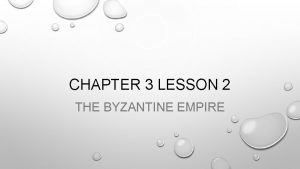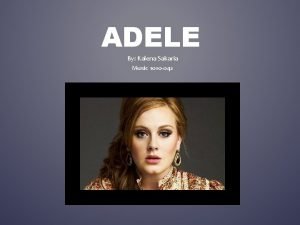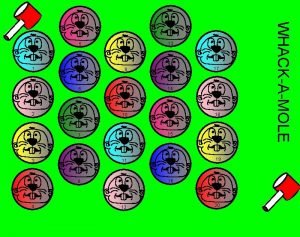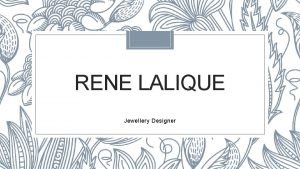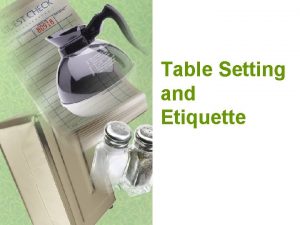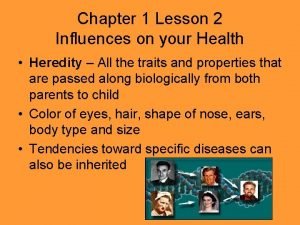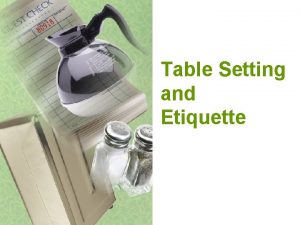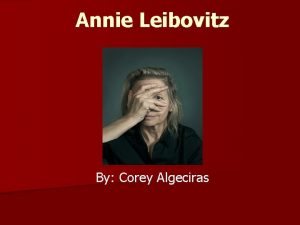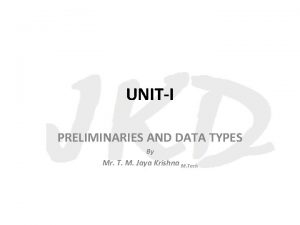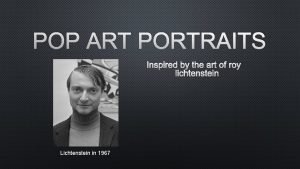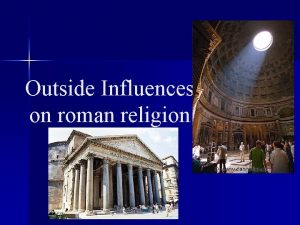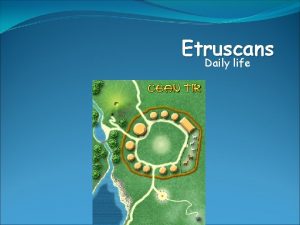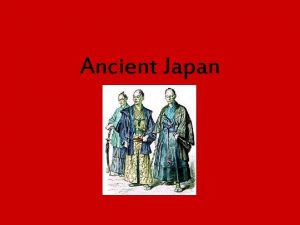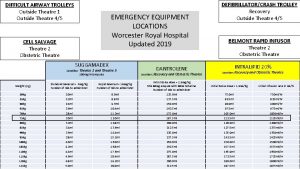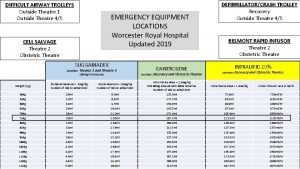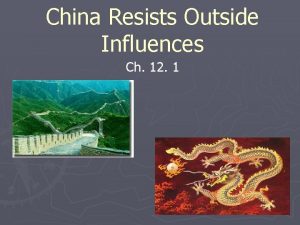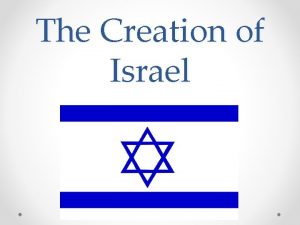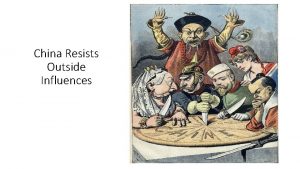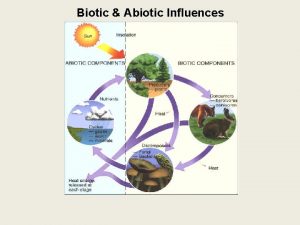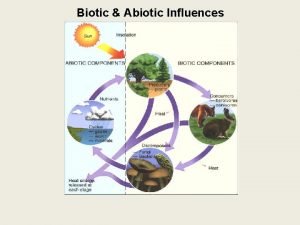The Land of the Etruscans MANY OUTSIDE INFLUENCES





























































- Slides: 61

The Land of the Etruscans

MANY OUTSIDE INFLUENCES

ART & ARCHITECTURE • • Temples & Tombs Cremation - afterlife Rock-cut tombs Afterlife similar to Egyptians Votive statues Used Greek deities Terra-cotta

Etruscans • • Concerned with emotion rather than realism Some religious topics/some light hearted

Origin of the Etruscans • Between 900 and 500 BCE • Called themselves the Rasenna, the Greeks called them Tyrrhenioi; the Romans called them the Etruscans. • Came from eastern Mediterranean, possibly Asia Minor. • Their land was called Etruria.

Etruscan Art • Art created for religious or utilitarian purposes. • Most famous pieces created out of terracotta. • Many murals and frescoes on tomb walls. • Lively depictions of life—dancing, games, music, and feasting. • Pottery at first copies of Greek works. Later, created their own bronze pottery. • Bronze crafts [mirrors, bowls, candelabra].

Etruscan Art History Villanovan Period 9 th to 8 th century BC Comparable to Geometric period in Greece Orientalizing Phase c. 750 BC to 575 BC Etruscans reach height of power Archaic Period Mid 6 th to mid 4 th century BC Flowering of Etruscan civilization Coincides with Greek Archaic period Strong Greek influence

Etruscan Art (700 -539 BCE) Etruscans = Ancient Italians who adopted much of he Greek Culture (was ETRURIA, now TUSCANY) Sculptures made from terracotta (Italian for “Baked Earth”) The new ‘Tuscan Style’ of architecture takes Greek orders with a twist

SCULPTURE Artist: Master sculptor Vulca (? ) Title: Apollo Medium: Painted terra cotta Size: height 5'10" (1. 8 m) Date: c. 510– 500 BCE Source/Museum: Temple of Minerva, Portenaccio, Veii.


Reconstruction of an Etruscan Temple

Etruscan Art (700 -539 BCE) Columns were smooth and did not surround temple Only one set of stairs leading up to stylobate Lots of terra-cotta sculpture – especially on roof Front and Back sides no longer the same

ROMAN ARCHITECTURAL ORDERS Composite Order: combines Ionic (volute) with Corinthian (acanthus leaves)

Greek vs. Etruscan Temples Similarities Gable roof General design Columns Triangular cornice Differences The Etruscan temple: Rests on tall base, or podium Narrow stairway on south side Steps lead to deep porch Columns only in front Cella divided into three zones Constructed of wood, sun-dried brick and terra-cotta

Etruscan Cemetery

Etruscan Funeral & Tomb

The tombs of Cerveteri



Interior of an Etruscan Tomb

TOMBS Title: Burial chamber, Tomb of the Reliefs Date: 3 rd century BCE Source: Cerveteri


4 th Century Etruscan tombs designate the sex of those within: men marked by phallusshaped stone pillars, women by houseshaped stone pillars. Romans began to take over the Etruscan city-states: 396 destruction of Veii 311 Romans head north into Etruria, establishing a military presence there.

Grave Markers for Tombs

Sarcophagus Iconography Husband wife were shown on terra-cotta sarcophagi shaped like couches, with a blanket over them (symbol of brides as well as marriage). Example: Sposi sarcophagus from Cerveteri (6 th c. )



Ash Urn as Sarcophagus of Old Married Couple

Sarcophagus from Cerveteri. C 520 BCE 6’ 7” in length. ETRUSCAN



• 6 th-5 th Centuries Tombs at Tarquinia and elsewhere preserve painting that gives us a glimpse of the world of the Etruscans. Topics: banquets, games, hunting Tarquinia Tombs

PAINTINGS Title: Burial chamber, tomb of the Triclinium, Tarquinia Date: c. 480– 470 BCE

Etruscan Tomb Wall & Tomb Fresco

Status of Women in Etruscan Culture High compared with Greek and other cultures. Since all Etruscan literature is lost, how do we know about this status? Inscriptions, artifacts, Roman and Greek literature

Banquets As seen in art from tombs and elsewhere: Women reclined on banquet couches with their husbands (or other men, if we believe Theopompus). Note that after the Roman conquest of Etruria, these changed. Women were now depicted sitting upright by their reclining husbands.

Tarquina Tomb Banquet Scene

Co-ed Spectator Sports Etruscan art shows us men and women sitting together on bleachers to watch sporting events.

Etruscan Wrestlers

Domestic Scenes of Husband Wife Artifacts such as mirrors show us spouses in domestic realm - even by their bed. Intimate, affectionate depictions of married couples interacting in art (tomb paintings of banquets, carved sarcophagi, mirrors, pottery). Bonfante points out that the Etruscans didn’t import as many Greek vases with scenes of women alone - they didn’t appeal as much in a society in which women were not sequestered and secluded like in Classical Athens.

Mirrors Depicting Married Couples in Domestic Contexts

Marriage Ceremony: Inspecting the Gifts?

Couple on a Sarcophagus

Votive with Married Couple on Their Bed, 3 rd c.

Seianti Hanunia Tlesnasa Died c. 150 BCE Her tomb was discovered in 1886, with her sarcophagus intact, with skeleton inside, near Chiusi in northern Etruria. These are all family names (Seiante and Tlesna clans; Seianti was her family name, Tlesnasa her husband’s), given above - we don’t know what her given name was. Her middle name, Hanunia, is the feminine form of Hanu, a given name often found in the Seiante family.


Skeletal Analysis She was: elderly (around 55)


Children in Art Unlike Greek culture, Etruscan culture has many artistic representations of children; often as infants with nursing mothers.

Votive of Swaddled Baby

Literacy A small percentage of bronze mirrors were inscribed with names, etc.

Women were depicted wearing heavy mantles (outerwear) and sturdy shoes, Dress implying that they got out a lot more than Greek women. There was less of a distinction between male and female dress.

Status of Women in Etruscan Culture High compared with Greek and other cultures. Since all Etruscan literature is lost, how do we know about this status? Inscriptions, artifacts, Roman and Greek literature

Legend of Remus and Romulus

Romulus and Remus nursed by a She-Wolf

Importance of banquets

Dance and Music

Dance, Spin ! Double Flutist

Fashion

Etruscan Gold Jewelry

Etruscan Luxury Goods
 Master sculptor vulca
Master sculptor vulca The etruscans lived in the area known as _____.
The etruscans lived in the area known as _____. Roman law
Roman law Etruscans
Etruscans Early kings of rome
Early kings of rome How many degrees is it going to be outside
How many degrees is it going to be outside What are landforms
What are landforms What are landforms
What are landforms Many-to-many communication
Many-to-many communication Unary many to many
Unary many to many What is unary relationship in dbms
What is unary relationship in dbms Sqlbi many to many
Sqlbi many to many Many sellers and many buyers
Many sellers and many buyers Unary many to many
Unary many to many Unary relationship database
Unary relationship database Er diagram
Er diagram Contoh erd many to many
Contoh erd many to many Many sellers and many buyers
Many sellers and many buyers Unary many to many
Unary many to many What cultural influences shaped the byzantines?
What cultural influences shaped the byzantines? Analyzing influences on health
Analyzing influences on health Rizal 3 uncles
Rizal 3 uncles Influences on parliamentary law making
Influences on parliamentary law making Sakaria song
Sakaria song Latitude strongly influences climate because
Latitude strongly influences climate because What influences weather
What influences weather Bob fosse influences
Bob fosse influences What influences people’s choice of fitness activities?
What influences people’s choice of fitness activities? Project life cycle structures
Project life cycle structures My system of career influences
My system of career influences Pronatalist pressures are influences that lead people to
Pronatalist pressures are influences that lead people to Influences on business environment
Influences on business environment Influences on parliament
Influences on parliament Influences of organizational structures on projects
Influences of organizational structures on projects Business markets and business buyer behavior chapter 6
Business markets and business buyer behavior chapter 6 The media is a powerful influence because it
The media is a powerful influence because it Influences on law making
Influences on law making Social influences on consumer behavior
Social influences on consumer behavior Lawrence kohlberg influences
Lawrence kohlberg influences Environmental influences
Environmental influences Rene lalique jewellery
Rene lalique jewellery Major influences on business buyer behavior
Major influences on business buyer behavior Influence examples
Influence examples Perceptual set
Perceptual set Example of cultural influences
Example of cultural influences French table setting
French table setting Environmental influences
Environmental influences Influences on parliament
Influences on parliament Influences on your health
Influences on your health Setting the table influences
Setting the table influences Salty sour
Salty sour Annie leibovitz education
Annie leibovitz education Everything that surround us
Everything that surround us Influences on language design
Influences on language design Influences on language design
Influences on language design Pop art self portrait
Pop art self portrait Influences on food choices worksheet
Influences on food choices worksheet Generation time
Generation time Environmental influences on consumer behavior
Environmental influences on consumer behavior Example of cultural influences
Example of cultural influences Snoop dogg influences
Snoop dogg influences Factors influencing communication pdf
Factors influencing communication pdf
